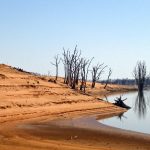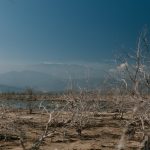 July 19, 2021 1:36 pm
Published by Jenny Rislund
July 19, 2021 1:36 pm
Published by Jenny Rislund
The passage of weather fronts over southeast Australia during the spring and summer increases the risk of dangerous fire weather. This project will carry out an analysis of observational data to determine a method for characterising when fronts have passed through southeast Australia.
 April 14, 2021 11:00 am
Published by Climate Extremes
April 14, 2021 11:00 am
Published by Climate Extremes
The newly formulated Attribution and Risk research program is by its very nature focused on the impacts of weather and climate on our society. A key piece of research on business risk and the emergence of climate risk perfectly highlighted this.
 March 18, 2021 1:16 pm
Published by Climate Extremes
March 18, 2021 1:16 pm
Published by Climate Extremes
This research around central Pacific El Niños is important for agricultural and water resources planning efforts in the Murray Darling Basin region and may help with seasonal prediction efforts to predict drought‐breaking rain such as occurred in early 2020.
 March 15, 2021 10:10 am
Published by Climate Extremes
March 15, 2021 10:10 am
Published by Climate Extremes
This study uses a high‐resolution climate model to investigate how and why marine heatwaves would change for the Australian region. The relative impacts of increases on background ocean temperature and changes to intrinsic temperature variations are compared.
 February 12, 2021 10:01 am
Published by Climate Extremes
February 12, 2021 10:01 am
Published by Climate Extremes
The majority of heatwaves affecting south-eastern Australia are part of large and strong weather systems propagating across Australia, and not due to stationary or blocked weather systems as seen in some other regions of the world.
 January 13, 2021 10:03 am
Published by Climate Extremes
January 13, 2021 10:03 am
Published by Climate Extremes
Project Coolbit, is an ongoing investigation that aims to create a personalised approach to assessing thermal comfort and preventing health complications during extreme heat events. It is research that could not only save the lives of individuals but may also change the way we design future cities.
 December 14, 2020 11:01 am
Published by Climate Extremes
December 14, 2020 11:01 am
Published by Climate Extremes
A major component of the research in the Drought program over the past four months has focused on the interface between real-world data and climate models. The aim of much of this research has been to improve how land surface models represent some of the key processes that influence the length, and severity of drought.
 November 23, 2020 3:56 pm
Published by Climate Extremes
November 23, 2020 3:56 pm
Published by Climate Extremes
CLEX researchers and colleagues examined the contribution to uncertainty in simulated future changes in crop yields using the change-factor method and an additional, more sophisticated, statistical downscaling method of generating realistic future climate data from climate model output.
 October 9, 2020 11:53 am
Published by Climate Extremes
October 9, 2020 11:53 am
Published by Climate Extremes
PhD student Charuni Pathmeswaran was invited as a climate scientist to take part in a young professionals’ event organized by the NESP Earth Systems and Climate and Change (ESCC) Hub and jointly hosted by the Actuaries Institute and Engineers Australia.
 October 1, 2020 12:08 pm
Published by Climate Extremes
October 1, 2020 12:08 pm
Published by Climate Extremes
Australia researchers are calling on storm chasers and members of the general public fascinated by severe weather to take part in a citizen science project that will help better capture the occurrence of extreme weather events and improve our ability to forecast them.










